Years of service 1935–41 Name Werner Molders | ||
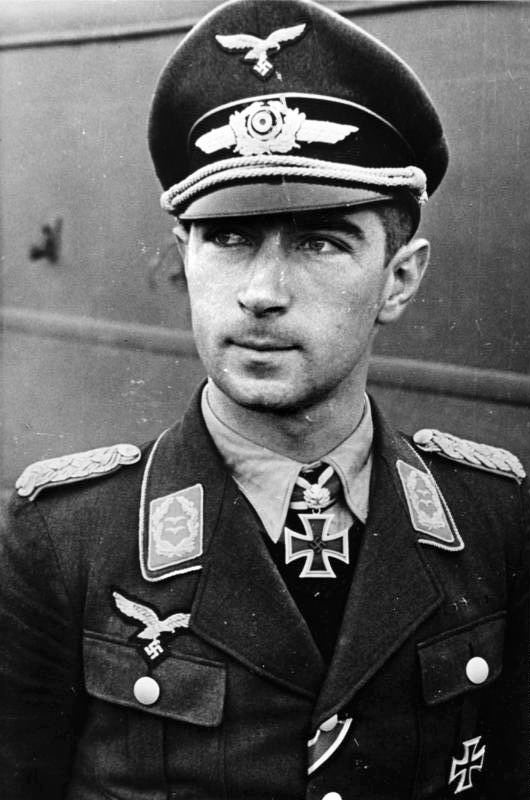 | ||
Nickname(s) Vati ("Pappy" or "Daddy") Born 18 March 1913Gelsenkirchen, Westphalia ( 1913-03-18 ) Died 22 November 1941(1941-11-22) (aged 28)Breslau Buried at Invalidenfriedhof Berlin | ||
Werner Moelders 100 birthday 2013
Werner Mölders (18 March 1913 – 22 November 1941) was a World War II German Luftwaffe pilot and the leading German fighter ace in the Spanish Civil War. Mölders became the first pilot in aviation history to claim 100 aerial victories—that is, 100 aerial combat encounters resulting in the destruction of the enemy aircraft, and was highly decorated for his achievements. He was instrumental in the development of new fighter tactics that led to the finger-four formation. He died in an air crash in which he was a passenger.
Contents
- Werner Moelders 100 birthday 2013
- Childhood education and early career
- Condor Legion
- Tactical innovations
- Phoney War and the Battle of France
- Battle of Britain
- Eastern Front
- High command
- Death
- Personal life and character
- Legacy
- Post war honours
- Reversal of honours
- Awards
- References

Mölders joined the Luftwaffe in 1934 at the age of 21. In 1938, he volunteered for service in the Condor Legion, which supported General Francisco Franco's Nationalist side in the Spanish Civil War, and shot down 14 aircraft. In World War II, he lost two wingmen in the Battle of France and the Battle of Britain, but shot down 53 enemy aircraft. With his tally standing at 68 victories, Mölders and his unit, the Jagdgeschwader 51 (JG 51), were transferred to the Eastern Front in June 1941 for the opening of Operation Barbarossa. By the end of 22 June 1941, the first day of Barbarossa, he had added another four victories to his tally and a week later, Mölders surpassed Manfred von Richthofen's 1918 record of 80 victories. By mid-July, he had 100 World War II victories.

Prevented from flying further combat missions for propaganda reasons, at the age of 28 Mölders was promoted to Oberst, and appointed Inspector General of Fighters. He was inspecting the Luftwaffe units in the Crimea when he was ordered to Berlin to attend the state funeral of Ernst Udet, the World War I flying ace. On the flight to Berlin, the Heinkel He 111 in which he was traveling as a passenger encountered a heavy thunderstorm during which one of the aircraft's engines failed. While attempting to land, the Heinkel crashed at Breslau, killing Mölders and two others.
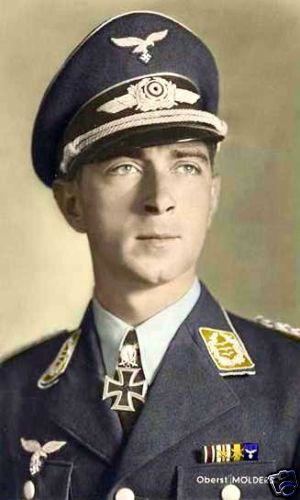
The German Wehrmacht of Nazi Germany and the Bundeswehr of the Federal Republic of Germany both honoured him by naming two fighter wings, a destroyer and barracks after him. However, in 1998, the German Parliament decided that members of the Condor Legion such as Mölders, should "no longer be honoured". Therefore, in 2005, the German Ministry of Defence decided to remove the name "Mölders" from the fighter wing still bearing his name.
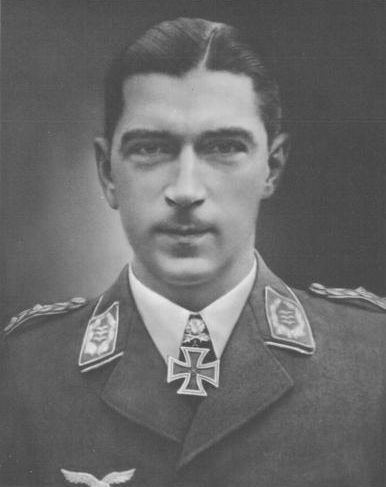
Childhood, education and early career
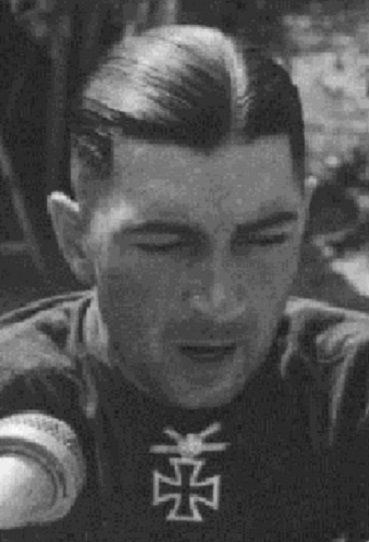
Mölders was born on 18 March 1913 in Gelsenkirchen, the son of teacher Viktor Mölders and his wife Annemarie, née Riedel. He was the third of four children, with an older sister, Annemarie, an older brother, Hans, and a younger brother, Victor. After his father, a Reserve Leutnant in the King's 145th Infantry Regiment, was killed in action on 2 March 1915 in the Argonne Forest in France, his mother moved the family into her parents' house in Brandenburg an der Havel.
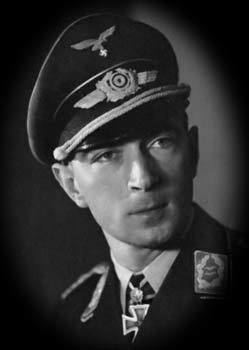
In Brandenburg, Mölders found a father figure in Chaplain Erich Klawitter, who instilled firm religious beliefs in him. From 1919 to 1931, Mölders attended, first, the elementary school and then the Saldria-Gymnasium, or secondary school. At school he discovered his love for water sports, especially rowing. He joined two rowing clubs, first the Saldria-Brandenburg and later the Brandenburger Ruderclub, and enjoyed success at rowing-regattas. He was also a member of the Bund Neudeutschland in der katholischen Jugendbewegung, a Catholic youth organisation. Mölders graduated from school in early 1931 with the Abitur (diploma) and expressed a desire to become an officer in the armed forces.
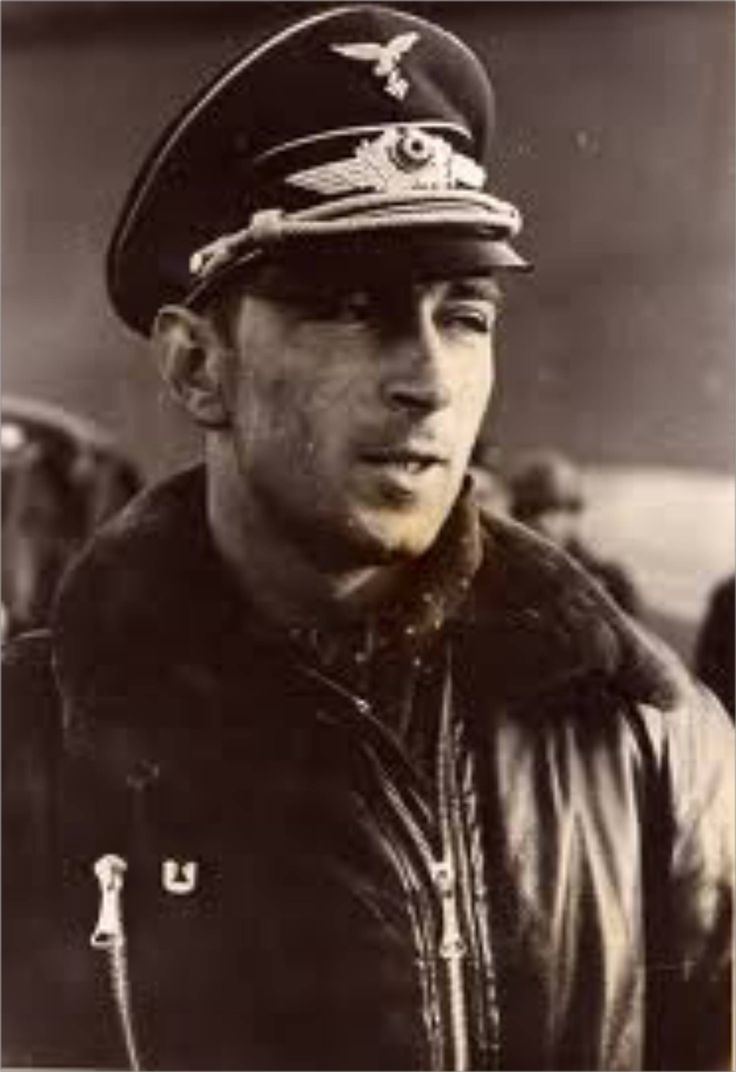
Mölders joined the II./2 infantry regiment of the Reichswehr in Allenstein, East Prussia on 1 April 1931, serving as an officer cadet in the infantry. He attained the rank of Fahnenjunker-Gefreiter on 1 October 1931, rising to Fahnenjunker-Unteroffizier on 1 April 1932. After completing his basic military training in October 1932, he transferred to the Military School Dresden. On 1 June 1933, he successfully completed his training in Dresden and was promoted to ensign. He again was transferred, this time to the 1st Prussian Pioneer Battalion (Infantry Regiment 2) at the Pioneer School in Munich. During his training years, Mölders made his first attempt to fulfil his dream of flying and volunteered for pilot training, but was declared unfit for flying. He tried again and was given conditional permission (bedingt tauglich—with constraints) to begin flight training.
After his promotion to Oberfähnrich on 1 February 1934, Mölders began his pilot training at the Deutsche Verkehrsfliegerschule (German transport flying school) in Cottbus, lasting from 6 February 1934 to 31 December 1934. On 1 March 1934, he was promoted to Leutnant and assigned to the recently established Luftwaffe. In the early stages of his pilot training, he suffered continually from nausea and vomiting, but he eventually overcame these problems and finished the course at the top of his class. The next phase of his military pilot's training was from 1 January 1935 to 30 June 1935 at the combat flying school in Tutow and the Jagdfliegerschule (fighter pilot school) at Schleißheim near Munich. He received the newly created Pilot's Badge of the Luftwaffe on 21 May 1935.
On 1 July 1935, Leutnant Mölders was posted to Fliegergruppe Schwerin (I./JG 162 "Immelmann"). On 7 March 1936, during the remilitarisation of the Rhineland, Mölders and his squadron (Staffel) flew from Lippstadt across the Ruhr region; his unit was the first to arrive in Düsseldorf. During this period, Mölders met Luise Baldauf, whom he was to marry a few years later, shortly before his death. On 20 April 1936, Adolf Hitler's birthday, numerous promotions were handed out, and Mölders advanced to Oberleutnant, effective as of 1 April 1936. At the same time, he became leader of the fighter training squadron of the 2nd Group of Jagdgeschwader 134 "Horst Wessel". This group was under the command of Major Theo Osterkamp, who became another of Mölders' early mentors. Mölders was appointed squadron leader (Staffelkapitän) of the 1st squadron of Jagdgeschwader 334 on 15 March 1937 and served as an instructor in Wiesbaden.
Condor Legion
In 1936, the Germans sent a Luftwaffe force, the Condor Legion, to assist the Nationalists in the Spanish Civil War. Mölders volunteered for service, and arrived by sea in Cadiz on 14 April 1938. He was assigned to the 3rd squadron of Jagdgruppe 88 (J 88) commanded by Oberleutnant Adolf Galland. The unit, stationed at the Valencia–Ebro front, was equipped with the Heinkel He 51, but later switched to the Messerschmitt Bf 109 B-2. Mölders assumed command of the squadron on 24 May 1938, when Galland returned to Germany. He claimed his first aerial victory, shooting down a Polikarpov I-15 "Chato" ("Curtiss" to the Germans) near Algar, on 15 July 1938. Over the remaining months of the year, Mölders became the leading ace of the Condor Legion, claiming 15 aircraft in Spain: two I-15 "Curtiss", 12 I-16 "Rata" and one Tupolev SB (one "Rata" claimed on 23 September 1938 was not confirmed).
In recognition of his exceptional performance as a commander and fighter pilot, Mölders was promoted to Hauptmann (captain) on 18 October 1938, effective as of 1 October 1938. He claimed his 14th and final confirmed aerial victory of the conflict by downing a Polikarpov I-16 "Rata" near Mola on 3 November 1938 and returned to Germany on 5 December 1938. From 6 December 1938 until March 1939, Mölders was a member of the 1st group of Jagdgeschwader 133 (JG 133) and held a staff position with the Inspector of Fighters at the Reichsluftfahrtministerium (Imperial Air Ministry) in Berlin. His task was to devise new fighter pilot tactics. In March 1939 he was given command as Staffelkapitän of 1./JG 133, taking over command from Oberleutnant Hubertus von Bonin. JG 133 was later renamed Jagdgeschwader 53 Pik As (Ace of spades).
For his achievements in Spain, Mölders was honoured with the Spanish Medalla de la Campaña and Medalla Militar on 4 May 1939 and the German Spanish Cross in Gold with Swords and Diamonds (Spanienkreuz in Gold mit Schwertern und Brillanten) on 6 June 1939. The Condor Legion officially returned to Germany on 6 June 1939 and troops marched through Berlin to the Lustgarten, where the fallen were honoured. A formal state banquet for the most highly decorated soldiers was held in the marble gallery of the Reich Chancellery. Mölders was seated at table 1, with General der Flieger Hugo Sperrle, General Don Antonio Aranda, General Gonzalo Queipo de Llano, Oberst Walter Warlimont, Oberstleutnant von Donat, Leutnant Reinhard Seiler and Oberfeldwebel Ignatz Prestele.
Tactical innovations
With other airmen in Spain, Mölders developed the formation known as the "finger-four". This improved the all-round field of vision and combat flexibility of a flight (Schwarm), enhanced mutual protection, and encouraged pilot initiative. In the "finger-four", the aircraft assumed positions corresponding to the fingertips of an outstretched hand. The fighters flew in two elements (Rotten) of two aircraft each; two Rotten (four aircraft) made up a Schwarm (swarm).
Mölders is often credited with inventing the cross-over turn. An early version of the manoeuvre, as used by a "Vic" of five aircraft (a tight formation forming the letter "V"), appeared in the Royal Air Force (RAF) Training Manual of 1922, and the manoeuvre may even date back to 1918. However, it had fallen into disuse due to the difficulty of performing it in a multi-aircraft formation with the contemporary spacing of less than 100 feet (30 m) between aircraft. The wide lateral separation of 1,800 feet (550 m) introduced by J 88 both necessitated such a turning manoeuvre, to enable a Schwarm to turn as a unit, and minimised the risk of midair collisions previously associated with it.
Phoney War and the Battle of France
At the outbreak of World War II on 1 September 1939, Mölders' Staffel was stationed in the west protecting Germany's border in the Mosel–Saar–Pfalz region. On 8 September 1939, Mölders' fighter suffered an engine failure; he crash-landed, flipping the aircraft over and injuring his back. The injury kept him out of combat for several days. He returned to flying on 19 September. The following day, between Contz and Sierck, at the apex of the Dreiländereck, over the three borders area, he shot down his first aircraft of the war, a Curtiss P-36 (according to other historians, it was one of a trio of French Hawk H-75As ), of Groupe de Chasse II/5 (Sgt Queginer bailed out). Thanks to that victory, he earned the Iron Cross 2nd Class. He recalled his first victory:
On 26 September 1939, JG 53 was ordered to form its III. Gruppe. Mölders relinquished command of 1./JG 53 to Oberleutnant Hans-Karl Mayer and organised the formation of III./JG 53 at Wiesbaden–Erbenheim; within two weeks, Gruppenkommandeur Mölders reported that the Gruppe was conditionally operational with 40 pilots and 48 aircraft.
On 22 December, Mölders, leading four Bf 109s from III./JG 53, engaged three Hawker Hurricanes over the Saar River, between Metz and Thionville, that were trying to intercept an unidentified aircraft. Mölders and Hans von Hahn shot down two Hurricanes flown by Sergeants R.M. Perry and J. Winn, becoming the first German fighter pilots to shoot down a Hawker Hurricane. Mölders shot down another Hurricane on 2 April, when he forced Flight Lieutenant C.D. "Pussy" Palmer of No. 1 Squadron RAF, to bail out, and on 20 April, he destroyed a French Curtiss P-36 Hawk (H-75A) east of Saarbrücken.
By the time the Phoney War ended and Operation Case Yellow (Fall Gelb, the invasion of France and the Low Countries on 10 May 1940) opened the Battle of France, Mölders' tally of aerial victories on the Western Front had increased to nine. This number included one Bristol Blenheim, two Curtiss P-36 Hawks, two Morane-Saulnier M.S.406s and four Hawker Hurricanes. On 14 May, while engaging enemy bombers over Sedan, Mölders was shot down, but bailed out safely. He claimed his 19th and 20th victories on 27 May 1940, downing two Curtiss Hawks 15 kilometres (9.3 mi) southwest of Amiens. Subsequently, he became the first fighter pilot to be awarded the Knight's Cross of the Iron Cross (Ritterkreuz des Eisernen Kreuzes) and on 29 May 1940 was mentioned in the Wehrmachtbericht radio report, the first of 11 such mentions.
On 5 June 1940, on his 133rd combat mission of the war, engaging in aerial combat for the 32nd time, Mölders was shot down near Compiègne at about 18:40 by Sous lieutenant René Pomier Layrargues, flying a French Air Force Dewoitine D.520. Mölders was taken prisoner but liberated three weeks later upon the armistice with France. While in French captivity, Mölders asked to shake hands with the pilot who had shot him down, and learned that Pomier-Layrargues had been killed in action 30 minutes after their encounter. His initial experience in French captivity was harsh; he sustained abrasions to his face and his Knight's Cross was stolen from him. A French officer, Capitaine Giron, intervened, ensured he was treated fairly, and returned the stolen medal. When a French soldier was later sentenced to death by the Germans for beating Mölders, Mölders approached Hermann Göring and requested clemency, which was granted.
Battle of Britain
Returning to Germany, Mölders was promoted to Major on 19 July 1940 and took command the following day of Jagdgeschwader 51 (JG 51) from the recently promoted Generalmajor Theo Osterkamp. At the time, JG 51 were based at Saint-Inglevert, Pas-de-Calais, France. Mölders flew his first combat sortie with JG 51 on 28 July, attacking a No. 41 Squadron Supermarine Spitfire flown by Flying Officer A.D.J. Lovell. On this mission, according to legend, Mölders was hit in a dogfight over Dover by the South African ace Sailor Malan, sustaining three splinter wounds in the lower leg, one in the knee and one in the left foot. Oberleutnant Richard Leppla shot down the pursuing Spitfire, and Mölders was able to make an emergency landing at Wissant, France. Recent research suggests Mölders was actually wounded in combat by Flight Lieutenant J.T (John Terence) "Terry" Webster DFC in a Spitfire of 41 Squadron. Webster was killed in action on 5 September 1940. Mölders wounds, although not serious, kept him from further operational flying for a month. Generalmajor Osterkamp briefly led the Geschwader again during Mölders' convalescence. On 7 August 1940, Mölders returned to the Geschwader without medical clearance for combat, to participate in Operation Eagle Attack (code name Adlertag). Adolf Hitler had issued Führer Directive no. 17 (Weisung Nr. 17) on 1 August 1940; the strategic objective was to engage and defeat the Royal Air Force (RAF) so as to achieve air superiority in preparation for Operation Sea Lion (Unternehmen Seelöwe), the proposed amphibious invasion of Great Britain.
Mölders returned to approved operational flying status and flew his next two combat missions on 28 August 1940. His aide and wingman, Oberleutnant Kircheis, was shot down and taken prisoner during one of these missions; Oberleutnant Georg Claus took his place. Mölders claimed two Hurricanes on 31 August and was mentioned again in the Wehrmachtbericht. Oberleutnant Victor Mölders, his younger brother, who had been appointed Staffelkapitän of the 2./JG 51 on 11 September, was shot down and taken prisoner of war on 7 October 1940 by Archie McKellar. Two Spitfires of No. 92 Squadron RAF (Sgt PR Eyles and P/O HP Hill both killed) were shot down near Dungeness on 20 September increased Mölders' tally of aerial victories to 40. He was the first fighter pilot to reach this number during the war and was awarded the 2nd Knight's Cross of the Iron Cross with Oak Leaves (Ritterkreuz des Eisernen Kreuzes mit Eichenlaub) on 21 September 1940. The award was presented by Adolf Hitler on 23 September in the new Reichskanzlei in Berlin. After the award ceremony, Hermann Göring invited Mölders to his hunting lodge in the Rominter Heide.
Mölders returned to his unit by the end of September and continued to win aerial victories. On 11 October, Mölders claimed his 43rd victory. The 66 Squadron Spitfire I X4562 was flown by Pilot Officer J. H. T. Pickering, who bailed out, wounded, over Canterbury. Three Hurricanes on 12 October brought his tally to 51 victories, and he received a preferential promotion to Oberstleutnant in recognition of his 50 victories on 25 October 1940. While a severe bout of influenza then kept him grounded for a few weeks, his wingman in over 60 aerial combats, Oberleutnant Georg Claus, was killed over the Thames. On 1 December, Mölders claimed his last and 55th victory of 1940, 25 of which occurred in the Battle of France and 30 in the Battle of Britain.
Mölders and members of JG 53 spent a couple of weeks of R&R skiing in the Vorarlberg before continuing operations against the RAF over the Channel and occupied France during early 1941. His new wingman from January 1941 was Oberleutnant Hartmann Grasser. Mölders claimed his first aerial victory after the lengthy vacation on 10 February 1941; his tally reached 60 on 26 February and stood at 68 when the Geschwader was recalled from the Channel front. His logbook showed 238 combat missions plus an additional 71 reconnaissance flights; he had engaged in aerial combat 70 times.
Eastern Front
In June 1941, JG 51 and the majority of the Luftwaffe were transferred to the Eastern Front in preparation for Operation Barbarossa, the invasion of the Soviet Union. On the first day of combat operations, 22 June 1941, Mölders shot down three Tupolev SB bombers and one Curtis Hawk, earning him the Knight's Cross of the Iron Cross with Oak Leaves and Swords (Ritterkreuz des Eisernen Kreuzes mit Eichenlaub und Schwertern). Mölders was only the second German serviceman to receive this award; Adolf Galland, Fighter Squadron Commodore (Geschwaderkommodore) of Jagdgeschwader 26 "Schlageter" (JG 26), had received one the day before. The award was presented by Adolf Hitler on 3 July 1941 in the Wolfsschanze Hitler's Headquarters in Rastenburg. On 30 June, Mölders had become the highest-scoring fighter pilot in the history of aerial warfare after downing five Soviet bombers and bringing his tally to 82, two more than the record set in World War I by the "Red Baron", Manfred von Richthofen.
On 12 July 1941, JG 51 under the leadership of Mölders reported that it had destroyed 500 Soviet aircraft since the beginning of hostilities against the Soviets on 22 June, and had suffered three casualties. That day, JG 51 also reported its 1,200th aerial victory of the war, the credit going to Hauptmann Leppla. Three days later, on 15 July 1941, Mölders surpassed the C mark, claiming victories Nos. 100 and 101, and celebrated with a victory roll over the airfield. The following day he received news that he had been awarded the Knight's Cross of the Iron Cross with Oak Leaves, Swords and Diamonds (Ritterkreuz des Eisernen Kreuzes mit Eichenlaub, Schwertern und Brillanten). Mölders was the first of 27 German servicemen to receive this award. The diamonds added to the Knight's Cross were introduced officially on 28 September 1941, more than two months after Mölders earned the award. Mölders was promoted to Oberst on 20 July 1941, effective immediately, and banned from further combat flying. Surrendering command of JG 51 to Major Friedrich Beckh he was transferred to the Reich Air Ministry, a temporary position he held until 6 August 1941. Mölders was summoned to the Wolfsschanze again, where he received the Diamonds from Adolf Hitler on 26 July 1941. On 7 August 1941, he was appointed Inspector of Fighters (Inspekteur der Jagdflieger).
High command
An Oberst at 28, Mölders was appointed Inspector General of Fighters, a post responsible for deciding the ongoing tactical and operational doctrine of the Luftwaffe's fighter strategies. Returning to Russia in September 1941, he set up a command post at Chaplinka airfield, from where he flew in his personal Fieseler Fi 156 Storch (stork) on tours of the Jagdwaffe and personally directed German fighter operations.
Mölders also flew unofficially on missions, and actively commanded his old unit, JG 51, for several more months. On 9 August 1941, he took Herbert Kaiser on a "teaching" mission against a formation of Il-2 Sturmoviks. Mölders showed Kaiser how to shoot them down. He recalled later: "He positioned himself off to one side of-and some distance away from-the last Il-2 in a formation of six. He then turned in quickly and opened fire at the enemy's cockpit from an angle of some 30 degrees. The Il-2 immediately burst into flames and crashed. 'Do you see how it's done?', Oberst Mölders' voice came over the R/T. 'Right, now you take the next one.' I carried out the same manoeuvre and, sure enough, the next Il-2 went down on fire. 'And again!' It was like being on a training flight. Another short burst and the third Il-2 was ablaze. The whole lesson had lasted no more than 12 minutes!" In this way, Kaiser scored his 23rd and 24th kills. But because Mölders was officially banned from operational flying, the first Soviet aircraft was never officially credited to him. Within the next two months, it is speculated that Mölders unofficially shot down around another 30 Soviet aircraft. At least six of Mölders' unofficial victories are recorded in his fellow pilots' private log books.
Death
On 22 November 1941, Mölders travelled as a passenger in a Heinkel He 111 of Kampfgeschwader 27 "Boelcke" from the Crimea to Germany to attend the funeral of his superior, Ernst Udet, who had committed suicide. Attempting to land at Breslau during a thunderstorm, the aircraft crashed. Mölders, pilot Oberleutnant Kolbe and flight engineer Oberfeldwebel Hobbie were killed. Major Dr. Wenzel and radio operator Oberfeldwebel Tenz survived the crash landing. Dr. Wenzel sustained a broken arm and leg as well as a concussion, and Tenz a broken ankle. Mölders' fatal injuries included a broken back and a crushed ribcage. Accident investigators then and since have speculated whether Mölders would have survived the crash if he had used his seat belt.
Mölders was given a state funeral in Berlin on 28 November 1941. His coffin was laid out in the honour court of the Imperial Air Ministry. The guard of honour consisted of Johann Schalk, Günther Lützow, Walter Oesau, Joachim Müncheberg, Adolf Galland, Wolfgang Falck, Herbert Kaminski and Karl-Gottfried Nordmann. Mölders was buried next to Ernst Udet and Manfred von Richthofen at the Invalidenfriedhof in Berlin. The 8.8 cm flak in Berlin Tiergarten fired a salute; Hermann Göring gave the eulogy.
Personal life and character
Mölders was well known for his strength of character. His men nicknamed him "Vati" (Daddy), in recognition of his paternal attitude toward them, and the care he took of their well-being. He was a devoutly religious individual who demanded that all Allied aviators captured by those under his command be treated civilly, and often would invite captured pilots to dine with him.
Mölders married Luise Baldauf, née Thurner, the widow of a friend who had been killed in active service, on 13 September 1941. Erich Klawitter, Mölders' childhood mentor, performed the religious ceremony in Falkenstein, Taunus. Witnesses to the wedding included Leutnant Erwin Fleig and Oberleutnant Hartmann Grasser. The marriage produced a posthumous daughter, Verena.
Third Reich authorities disapproved of his choice of a Catholic marriage ceremony, performed by Klawitter. Klawitter had been barred from membership in the Reichskulturkammer (Reich Culture Chamber) and was considered politically unreliable after a 1936 breach of the Pulpit Law, a remnant of the 1870s Kulturkampf that among other religions barred Catholics from criticizing the state from the pulpit.
Legacy
Werner Mölders' old unit, Jagdgeschwader 51, was renamed "Mölders" in his honour, on 22 November 1941, only hours after his death. Its members were entitled to wear the "Mölders" cuffband. His death, however, was also put to other uses. Shortly after Mölders died, the British Intelligence agency dropped a flyer over Germany. The so-called Möldersbrief (Mölders-letter) was a copy of correspondence supposedly written by Mölders to the provost of Schwerin. In this letter, he expressed his strong belief in Catholicism and stated that, especially in the face of death, many supporters of National Socialism still find strength and courage with Catholicism.
Mölders' death, just shortly after Udet's own suicide, was too great an opportunity for Sefton Delmer, the chief of the British black propaganda in the Political Warfare Executive (PWE), to ignore. His idea was to use Mölders' popularity in Germany, distributing a letter thus creating the assumption that Mölders strong belief led him to oppose the Nazi regime in Germany. The letter was extremely well conceived. It did not bluntly call for opposition against the state. It never even mentioned the National Socialists by name but rather used metaphors like "the godless". Nevertheless, every German reader knew what was meant.
The letter caused a stir in the upper echelons of the Nazi regime. In his diaries, Joseph Goebbels, Reich Minister of Propaganda, assumed that someone in the German Catholic church organisation wrote, and distributed, the letter. A bounty of 100,000 Reichsmark, posted by the Führer himself, revealed no clues to its origins. Even the strongest repressive actions could not hinder the distribution of the letter.
Post-war honours
The Invalidenfriedhof, where Mölders is buried, lay in East Berlin and in 1975 East German officials ordered all the graves leveled. After the 1990 German reunification, Mölders' grave was rebuilt and rededicated on 11 October 1991 by Mölders' school friend and Domherr of the St. Hedwig's Cathedral, Heribert Rosal. The ceremony was witnessed by guests from the United States, Great Britain, Austria, Spain and Hungary.
After the war, on 13 April 1968, a destroyer of the Federal German Navy was christened Mölders in Bath, Maine (USA). It was in service between 1969 and 2003. As of 24 June 2005, it is the central attraction at the Navy Museum in Wilhelmshaven. On 9 November 1972, a base of a battalion of the 34th Signal Regiment of the Bundeswehr in Visselhövede received the name "Mölders". Most recently, the Fighter Wing 74 (Jagdgeschwader 74), stationed in Neuburg an der Donau, received the name "Mölders" in 1973. Fighter Ace Generalleutnant Günther Rall presented the cuffbands.
Reversal of honours
Mölders' career and legacy offer an example of the challenges posed in placing the heroism of the German armed forces in the post-war cultural, political and social setting. In 1998, on the occasion of the 61st anniversary of the bombing of the Spanish town of Guernica during the Spanish Civil War, the German Parliament decided that members of the Condor Legion, such as Mölders, should "no longer be honoured". In 2005, the Federal Ministry of Defence decided to remove the name "Mölders" from the JG 74. The decision was confirmed on 11 March 2005 by the Federal Minister of Defence Peter Struck, and at 10:00, the flags and cufftitles were removed.
Mölders' supporters challenged the ruling, and pointed out that Mölders had been posted to Spain well after the bombing of Guernica. They pointed to his equivocal political attitude towards National Socialism and his unequivocal moral commitment to Catholicism. Not only did he have a Catholic religious marriage ceremony but Klawitter, regarded by the Third Reich as politically "unreliable," had performed the ceremony. Furthermore, Mölders had joined the Catholic youth organisation Bund Neudeutschland (Union for New Germany) on 1 October 1925 and had been a youth leader of the organisation from 1929 to 1931. The Third Reich clearly had considered the Bund Neudeutschland as a threat: The Völkischer Beobachter (the official newspaper of the party) had reported on 26 January 1938 that the Bund had been outlawed for its proven subversive activities against the Reich, based on the Verordnung des Reichspräsidenten zum Schutz von Volk und Staat (Reich Presidential Decree for the Protection of People and State) of 28 February 1933. Despite petitions from politicians and high-ranking active and retired servicemen, among them Horst Seehofer, Günther Rall and Jörg Kuebart, the Office for Military History (MGFA) noted that Mölders' membership in the Bund Neudeutschland did not provide sufficient evidence of his having been critical of the regime, but rather showed the contrary and concluded that it was questionable whether Mölders had distanced himself enough from National Socialism before his death in 1941. Consequently, the decision remained in force.
Other evidence has surfaced illustrating Mölders' ambiguous relationship with the National Socialist regime. Mölders may have been in contact with bishop Clemens August Graf von Galen, who was highly critical of the Nazi regime. Von Galen publicly criticised the regime for the Gestapo's tactics and the deportation and euthanasia of the mentally ill. According to the diary kept by Heinrich Portmann, von Galen's secretary and chaplain, Mölders threatened to return his awards if von Galen's euthanasia accusation turned out to be true. Furthermore, Portmann stated that Hitler had asked Mölders during the presentation of the Diamonds to the Knight's Cross if there was anything he wished for. Mölders reportedly responded, "Please leave the bishop of Münster alone." Hitler assured him that "Yes, nothing will happen to the bishop of Münster." The MGFA concluded in 2004 that this story was most likely false. The MGFA revised its position again on 28 June 2007, concluding that there had been contact between Mölders and von Galen.
Evidence also demonstrates Mölders' propensity to value friendships over political expediency. According to Viktor Mölders, his brother had saved Georg Küch, one of Werner Mölders' closest friends, who had been classified as a half-Jew by the Nuremberg Laws, from death in the concentration camps. Mölders' and Küch's friendship dated to their school days at the Saldria-Gymnasium in Brandenburg an der Havel. Küch's mother, Alice née Siegel, was of Jewish birth. Küch's father, Richard Küch, owned and operated a pharmacy in Brandenburg. Georg, himself a pharmacy student, was expelled from university under the Nuremberg Laws, just two semesters shy of his graduation. In 1940, Richard Küch fell ill, and owning and operating the pharmacy became a bureaucratic problem for the family. Georg Küch contacted his friend Mölders in mid-February 1941, asking for help. Werner Mölders immediately responded to Küch on 16 February 1941, stating that he had taken care of the matter and asking Küch not to pursue the issue on his own. When Richard Küch died in June 1941, his wife was able to sell the pharmacy for fair market value. Normally, since she was Jewish, it would have been confiscated. She also remained exempt from wearing the detested yellow badge until late 1943. She was then taken to the Theresienstadt concentration camp, where she worked as a cook. Georg Küch, Alice Küch, and Georg's sister Friedel survived the Holocaust. Friedel Küch repeatedly stated that Werner Mölders had been responsible for protecting the family; the mantle of his protection had persisted beyond his death. The MGFA ruled this assertion "highly speculative," and did not investigate further.
